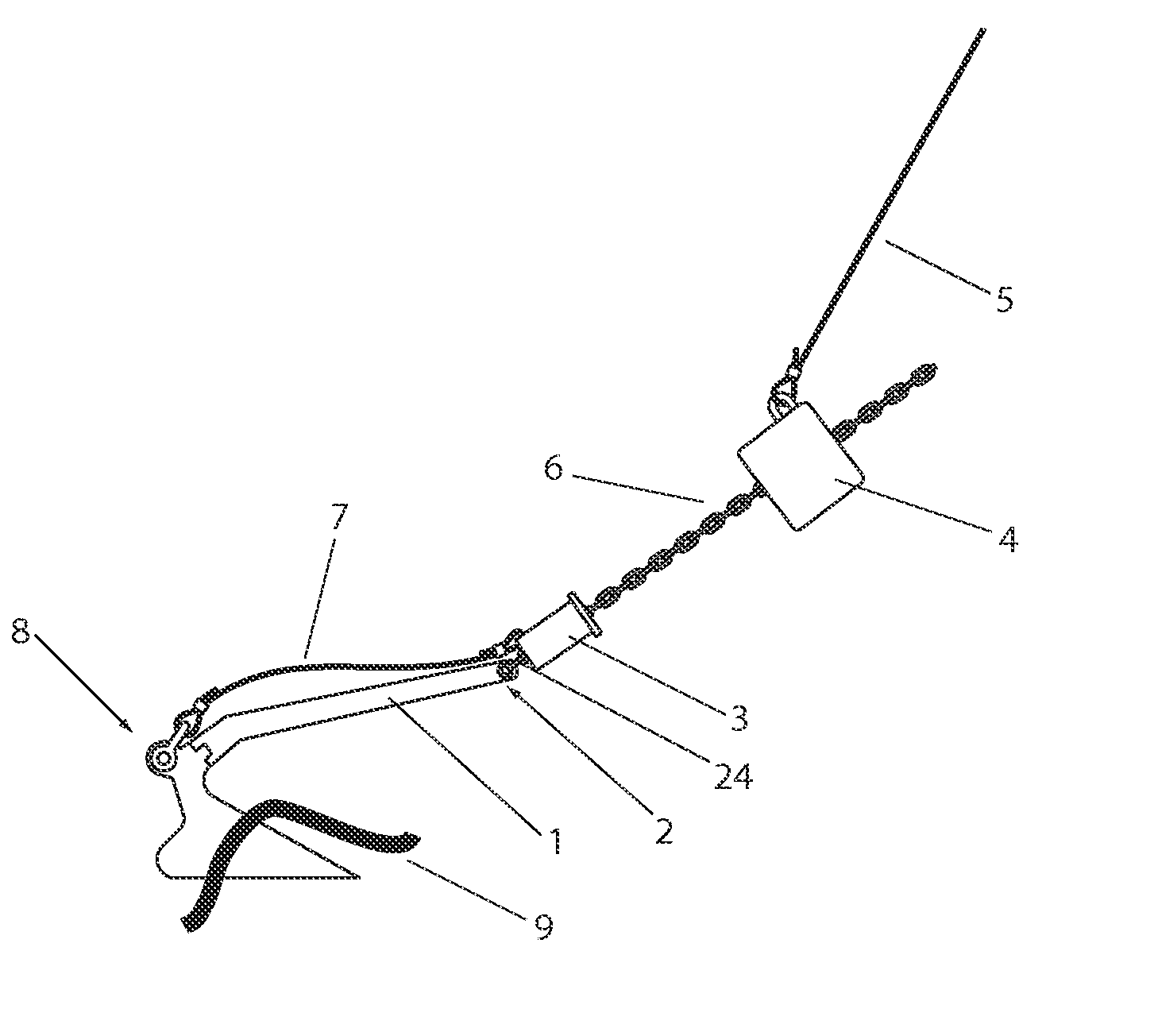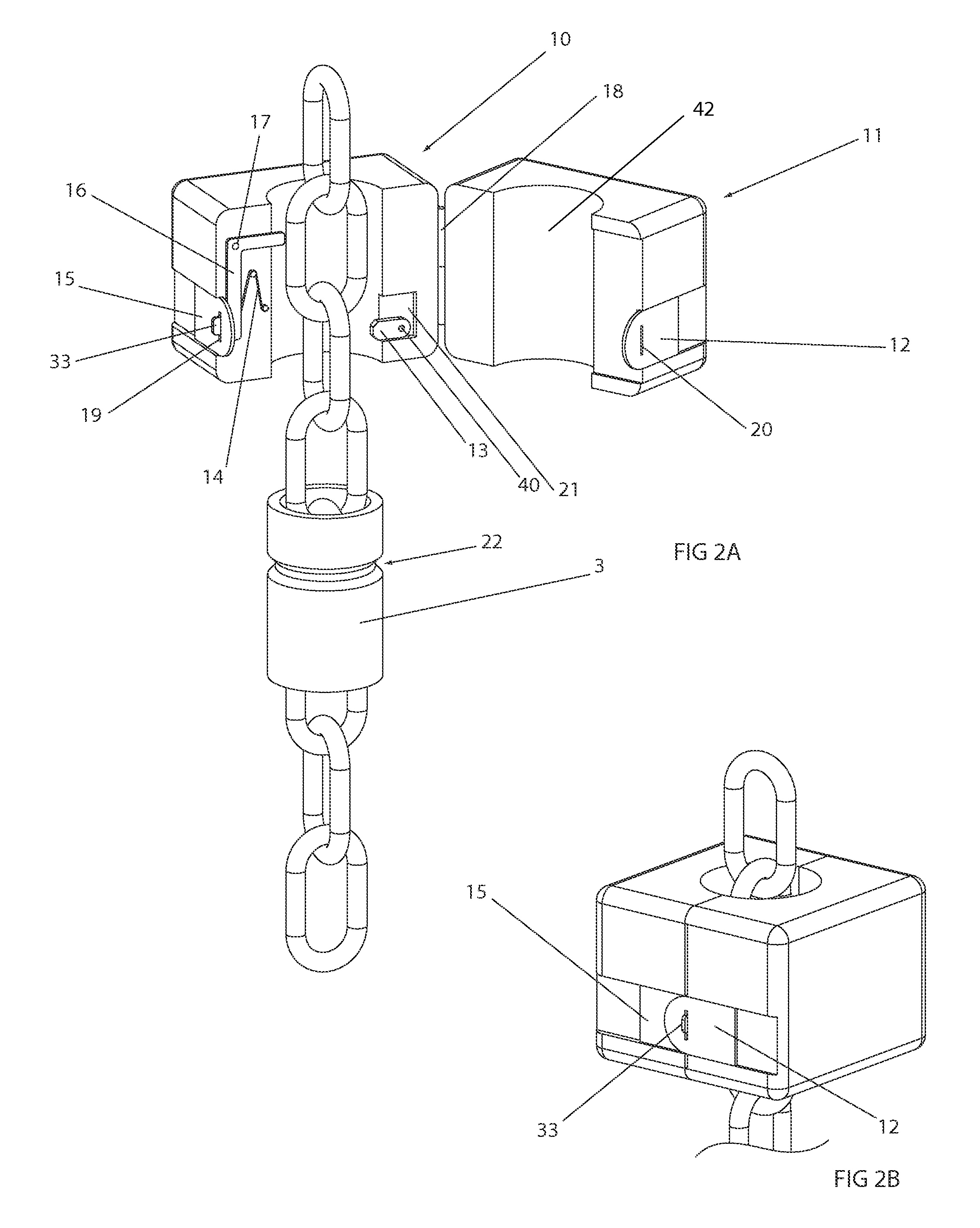Anchor Retrieval System (ARS)
- Summary
- Abstract
- Description
- Claims
- Application Information
AI Technical Summary
Benefits of technology
Problems solved by technology
Method used
Image
Examples
Embodiment Construction
[0016]For the purpose of this description, ‘remotely releasable retriever’ means a retriever releasable from the anchor rode by a means that allows the person effecting the release to be a distance greater than said person's arm's length from said retriever during the release.
[0017]The improved Anchor Retrieval System (ARS) of this invention has three major parts. One part, the improved slider, is slide-ably mounted on the anchor rode and is easily and safely mounted and dismounted from the anchor rode. Another part, the tether, attaches the slider to the crown end of the anchor during use. Another part, the remotely releasable retriever, is stored on the boat and put onto the anchor rode when needed and can be remotely released from the slider and anchor rode.
[0018]FIGS. 1A-B generally depict the prior art ARS. FIG. 1A depicts the anchor (1) of a boat fouled by an entanglement (9). Attached to the anchor, prior to the anchors deployment is the slider (3) and the tether (7), the tet...
PUM
 Login to View More
Login to View More Abstract
Description
Claims
Application Information
 Login to View More
Login to View More - R&D
- Intellectual Property
- Life Sciences
- Materials
- Tech Scout
- Unparalleled Data Quality
- Higher Quality Content
- 60% Fewer Hallucinations
Browse by: Latest US Patents, China's latest patents, Technical Efficacy Thesaurus, Application Domain, Technology Topic, Popular Technical Reports.
© 2025 PatSnap. All rights reserved.Legal|Privacy policy|Modern Slavery Act Transparency Statement|Sitemap|About US| Contact US: help@patsnap.com



